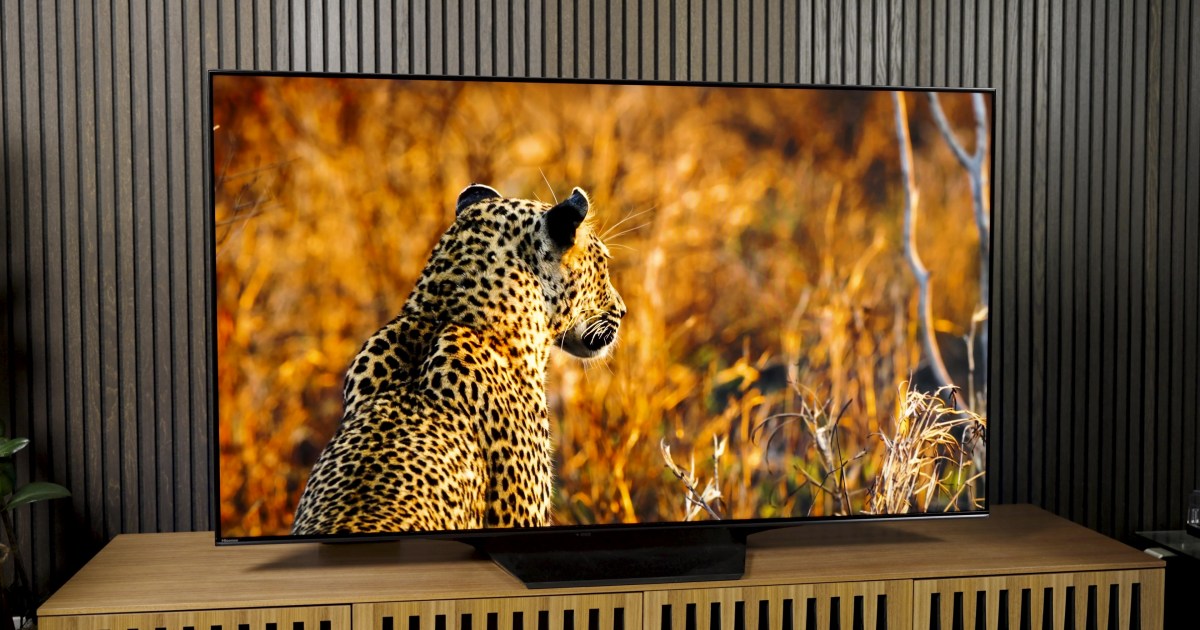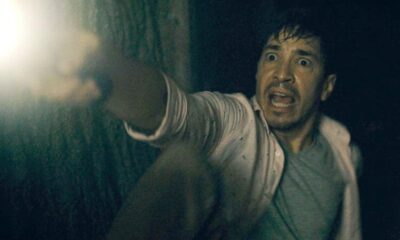Tech News
Hisense U7N TV review: a great value, with one big concern

Hisense U7N
MSRP
$1,000.00

“A brilliant bargain, if you can avoid getting a dirty panel.”
Pros
- High brightness
- Great contrast
- Vivid color
- Surprising accuracy
- Great for gaming
Cons
- Poor off-angle viewing
- Risk of dirty screen effect
After using the Hisense U7N for a little over two weeks, the most striking impression it has made on me is just how far TVs have come over the past four years. Just looking at the spec sheet and you very quickly think, “I can get all of that for how little money?”
This has got to be too-good-to-be-true situation, right?
So, is it? Let’s find out.
Start by flipping the calendar back to 2020 — a year in which many of us realized just how important a TV is not just for entertainment but for our sanity. (You know what happened that spring, right?)
That also was the year Hisense unleashed the H8G. You could get a 65-inch H8G back then for about $700. Adjusting for inflation, that’s about $825 in 2024 money.
If you look at the Hisense U8N today — which sits in the same spot within Hisense’s 2024 TV lineup as the H8G did back in 2020 — you’ll notice a 65-inch version of that TV is going to run you a little more than $1,000 on sale. That’s a big bump in price. I mention that because four years ago we talked about TVs like the H8G as being the pinnacle of value. You could spend a lot more, but TVs like the H8G performed so well it called into question whether you ever should spend more.
The spec sheet makes it look like a sleeper hit in the making.
The U8N is no longer that kind of TV for Hisense. Granted, you can’t draw a straight line between the old H8G and the U8N. The newer U8N is a far more advanced TV. Hisense simply raised its game in a big way.
No, that slam-dunk value proposition TV for Hisense is now this — the U7N. The 65-inch version of this TV lands at about $1,000, give or take. And as I said in the intro, the spec sheet makes it look like sleeper hit in the making.

I’m talking about a promised 1,500 nits peak brightness for HDR, mini-LED backlight system broken down into 384 dimming zones at this 65-inch size, a built-in subwoofer, advanced gaming features, up to 144Hz refresh rate, Wi-Fi 6, and an ATSC 3.0 tuner. I mean, it’s got features that you couldn’t even get four years ago at a really attractive price.
So, is it too good to be true, or is this really the biggest bang-for-your-buck TV we’ve ever seen? Let’s find out.
Hisense U7N specs
Here are the broad strokes for what you’ll find in the Hisense U7N:
| Sizes | 55, 65, 75, 85 inches |
| Panel type | Mini-LED |
| Weight | 30 to 34 pounds |
| Operating system | Google TV |
| Screen resolution | 3840 x 2160 |
| HDR support | Dolby Vision, HDR10, HDR10+, HLG |
| Refresh rate | 144Hz |
| Audio output | 40W + Dolby Atmos |
| HDMI | 2 HDMI 2.1, 2 HDMI 2.0, eARC |
| Networking | Wi-Fi 6E, Ethernet |
| Antenna | ATSC 3.0 |
Welcome surprises
During my whirlwind unboxing of this TV, I found just two surprises. One was the shiny silver finish on the remote — it’s plastic, by the way, not metal. The other was the stand, which comprises pigeon-toed legs — they’re stable, but not cute, and they include cable management clips, so thumbs up there. But the ugliness is covered by a plastic plate, which makes the stand a lot more attractive.

The TV’s thickness is about what I’d expect — middle of the road — and the bezels are virtually non-existent, which is par for the course these days. It’s definitely a decent-looking TV for the money.
The remote has one programmable button. So if your favorite streaming service isn’t already on here, you can map it to this button.
The operating system is Google TV, so you get a mic on the remote and built into the TV, which you can choose to turn on or off.
The initial setup takes a little while due to updates. But Google TV still does a really good job of speeding things along once you’ve given it your account credentials.
So far, so good!
I have lots of good news to share, but there’s one thing in particular you need to know about before you buy this TV.
Next step for my testing is to get it out of ECO mode, which fortunately just requires you to pick a different picture preset. There aren’t any hidden ECO settings that cap the TV’s brightness. I worked with both Theater Day and Filmmaker mode for SDR and HDR. I was sure to turn the automatic brightness sensor off, I made sure peak brightness and local dimming settings were on high, and I used Dolby Vision Custom with motion smoothing turned off and a couple of enhancement features shut down.
You can choose to apply these settings to all content sources, or just the one you’re using. That’s huge for me because it saves a bunch of time tuning the picture for every input.
I then proceeded to watch this TV every day for a couple of weeks. I have lots of good news to share, but there’s one thing in particular you need to know about before you buy this TV.
The nerdy nit bits
This is the segment I like to call Numbers for Nit Nerds. It’s where we dive into the measurements of this TV, check it against Hisense’s claims, and see how well it holds up to other TVs both at and above its price class.
Here’s what we’re working with:
SDR Peak Brightness with the default Filmmaker mode brightness setting of 45 came in at 531 nits. Theater Day with the brightness setting at 80 came in at 1,044 nits. If I maxed out the brightness setting, I got 1,317 nits.

If you pair that kind of brightness with the anti-glare screen on this TV, you have a television that can absolutely handle a bright room. So just remove that from your list of concerns.
Back to Filmmaker Mode. White balance came in looking pretty good with the 30% stimulus showing errors below a delta E of 2 and 100% around 4. That’s solid for a TV of this price.
The 20-point grayscale shows that the only real balance errors are in the brightest whites. Everything was at or below a delta E of 3, meaning not perceivable errors by the human eye.
For grins, I jacked up the brightness to 80 and the U7N actually measured a little better. The peak white balance got a little better — it dropped to about 3 — and the gamma stayed consistent, averaging about 2.5.
This is starting to look like a budget videophile’s dream TV.
Color performance in SDR Filmmaker mode was surprisingly good, with delta errors below 3 in the color gamut test. The color checker test though? This is a torture test, and the U79 gets a solid A. I didn’t expect such accuracy at this price point. I mean, compared to our Roku Pro Series review, this is starting to look like a budget videophile’s dream TV.
Color Saturation and Luminance tests also looked amazing. There were some more significant errors in some of the lower luminance reds and blues, but nothing outrageous. On balance, still surprisingly good.
In HDR Filmmaker mode, peak brightness on a 10% window was just over 1,300 nits. If I bumped the window size up a bit, we actually saw brightness performance go 1,500 nits. This is as promised, but the Hisense TVs I’ve tested have often exceeded claimed brightness.

This TV follows
-

 Destination8 months ago
Destination8 months agoSingapore Airlines CEO set to join board of Air India, BA News, BA
-

 Breaking News10 months ago
Breaking News10 months agoCroatia to reintroduce compulsory military draft as regional tensions soar
-

 Tech News12 months ago
Tech News12 months agoBangladeshi police agents accused of selling citizens’ personal information on Telegram
-

 Gadgets3 months ago
Gadgets3 months agoSupernatural Season 16 Revival News, Cast, Plot and Release Date
-

 Productivity11 months ago
Productivity11 months agoHow Your Contact Center Can Become A Customer Engagement Center
-

 Gadgets3 weeks ago
Gadgets3 weeks agoFallout Season 2 Potential Release Date, Cast, Plot and News
-

 Breaking News10 months ago
Breaking News10 months agoBangladesh crisis: Refaat Ahmed sworn in as Bangladesh’s new chief justice
-

 Toys12 months ago
Toys12 months ago15 of the Best Trike & Tricycles Mums Recommend





















